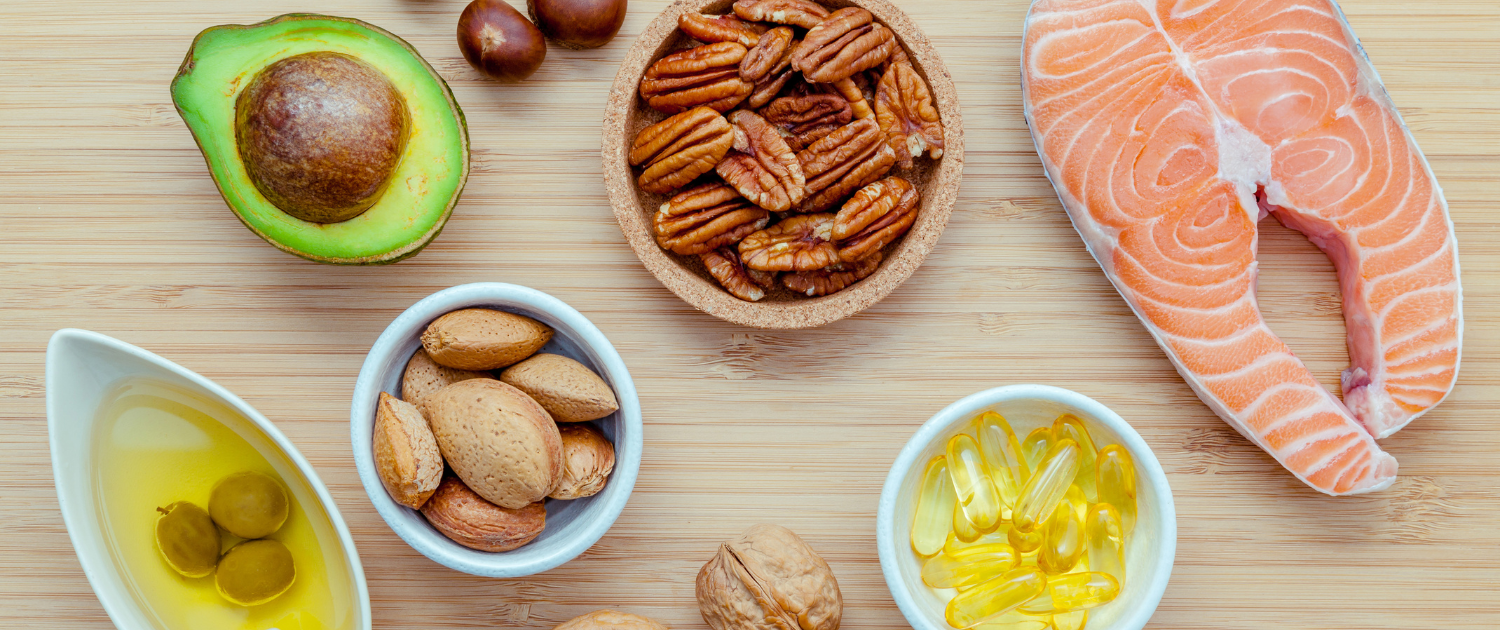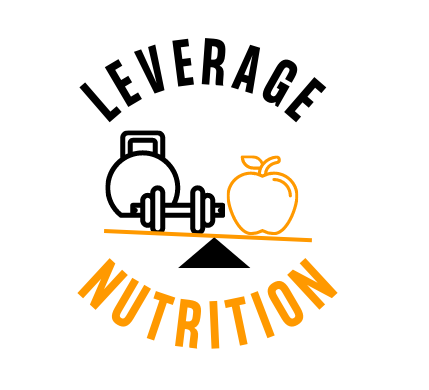
Fats are an essential component of a balanced diet, but not all fats are created equal. In this blog post, we’ll unravel the mysteries surrounding fats, helping you make informed choices.
Let’s start by talking about the different types of fats. Dietary fats can be categorized into the following types of fats:
- Saturated Fats
- Trans Fats
- Unsaturated Fats (mono and poly-unsaturated)
The “healthy” fats are unsaturated fats, found in foods like avocado and olive oil. The “unhealthy” fats are saturated fats and trans fats, found in foods like baked goods and red meat. Parenthesis is being used around both, because both types of fats are not inherently bad for you. Rather, it’s the quantity that will determine if it’s healthy/unhealthy.
Let’s talk about each of these fats in more detail.
Saturated Fats
Saturated fat has been touted to “clog arteries,” and the American Heart Association suggests maintaining a dietary pattern where only 5-6% of daily caloric intake is sourced from saturated fat. This is due to evidence of excessive consumption of saturated fats leading to increased cholesterol levels in the blood, which can increase risk of developing heart disease.
Most common sources:
- Cream
- Butter
- Lard
- Ghee
- Red meats (e.g., beef, pork, lamb)
- Poultry (especially with skin)
- Coconut oil
- Palm oil
- Palm kernel oil
- Dairy products like cheese and milk
What the research suggests:
- Effect of dietary cholesterol on affecting blood lipid profile is low if saturated fat intake low
- The saturated fat from dairy doesn’t have a negative effect. It actually can have a positive effect (1, 2, 3)
- Replacing saturated fat with unsaturated fat, or complex carbohydrate, has a good effect on lowering blood cholesterol levels
- Animal fat saturated fat is the worst culprits
Take-home message:
Be mindful about your intake of saturated fat, and try to reduce high intakes of foods high in saturated fats.
Trans Fats
Trans fats, categorized into naturally occurring and artificial types, present a dual narrative in the world of nutrition.
Naturally occurring trans fats, found in small amounts in animal-based products like meat and dairy, derive from the digestive process of grass-grazing animals such as cows and sheep. One example is conjugated linoleic acid (CLA), found in meat and dairy.
On the other hand, artificial trans fats, crafted through the industrial process of hydrogenation, involves adding hydrogen to liquid vegetable oils to make them solid. This process is used in the food industry to improve the texture, shelf life, and flavour stability of processed foods. These trans fats are prevalent in commercially baked and fried products like pastries, cakes, crackers, doughnuts, and french fries. The easy utility and cost-effectiveness of trans fats, coupled with their prolonged shelf life, make them very common in foods; especially in deep-fried foods at restaurants and fast-food establishments.
Most common sources:
- Commercial baked goods, such as cakes, cookies and pies
- Shortening
- Microwave popcorn
- Frozen pizza
- Refrigerated dough, such as biscuits and rolls
- Fried foods, including french fries, doughnuts and fried chicken
- Non dairy coffee creamer
- Stick margarine
What the research says:
- Naturally occurring trans fats in minimal quantities may offer health benefits
- Artificial trans fats have been shown to have adverse effects, like increasing bad cholesterol (LDL), decreased good cholesterol (HDL), and an increased risk of heart disease, stroke, and type 2 diabetes.
- Recommend limiting trans fat intake to 5-6% of daily caloric intake to safeguard cardiovascular well-being
Take-home message:
Similar to saturated fats, be mindful about your intake and try to reduce high intakes of foods high in saturated fats.
Unsaturated Fats: Mono and Poly-Unsaturated Fats
Otherwise known as “healthy” fats, the chemical structure of these fats are slightly different from saturated and trans fats: they have at least one “unsaturation” (where a chemical double bond exists instead of a single bond). This different structure plays a big role in affecting cardiovascular health.
More specifically, fats with one unsaturation are called mono-unsaturated fats (MUFA), and those with 2 or more are called poly-unsaturated fats (PUFA). One specific type of poly-unsaturated fat is Omega 3’s. Omega-3 fats are essential fats that must be consumed in your diet, as your body cannot produce them. Omega-3s play a role as an anti-inflammatory mediator, and have been shown to be involved with brain and heart health.
Most common sources:
- Oils: olive, canola oil, peanut oil, sesame, soybean, safflower
- Nuts: almonds, pecans, walnuts
- Seeds: sunflower, sesame, pumpkin, flax
- Fatty fish
- Avocados
- Olives
- Soy-based products like soy milk and tofu
- Specific rich sources of omega-3: fatty fish, such as salmon, tuna, arctic char, herring, and anchovies
What the research says:
- Reduces bad cholesterol (LDL), triglycerides (PUFA more than MUFA), and elevates good cholesterol (HDL)
- Helps prevent abnormal heart rhythms, can reduce inflammation and blood pressure
- Helps prevent atherosclerosis (hardening and narrowing of arteries)
- Lower risk of heart disease and stroke (largely due to above)
- Can contribute to satiety (feeling of fullness), which enhances post-meal satisfaction, curbing hunger, and fostering weight loss
- Supplementation with omega-3s may not have the same health benefits as eating the actual food source itself
- Omega-3 supplementation may have benefits for heart and brain health, but not all studies have found benefits – especially with healthy research subjects. It is important to choose high-quality supplements and consult with a healthcare provider before taking omega-3 supplements
Take-home message:
There is a lot of research to support the positive health effects of unsaturated fats. They should be the predominant type of fat in your diet, and your best bet is to get these healthy fats from your diet; supplementation may/may not help.
Main Takeaway
Not all fats are created equal, and quantity matters. It’s ok to have saturated and artificial trans fats in your diet, just make sure you don’t have too much. Have healthier unsaturated fats, and replace saturated fats with unsaturated sources when possible.
Something that can help you identify if something is saturated or unsaturated fats:
- Saturated fats are usually solid at room temperature (e.g., lard, shortening, bacon fat, coconut oil)
- Unsaturated fats are usually liquid at room temperature (e.g., olive oil, avocado oil)
Thanks for reading. Here are some other ways we can help:
Free:
Other blog posts on this website
Social Media: Instagram / Tik Tok / Facebook
Weekly email: 1 Recipe & Nutrition Tip
Paid:
References:
- Drouin-Chartier J-P et al. ‘Systematic review of the association between dairy product consumption and risk of cardiovascular-related clinical outcomes.’ Advances in Nutrition 7 (2016) 1026–1040.
- Bordoni A et al. ‘Dairy products and inflammation: A review of the clinical evidence.’ Critical Reviews in Food Science and Nutrition 57 (2017) 2497–2525.
- Larsson SC, Crippa A, Orsini N, Wolk A & Michaëlsson K. ‘Milk consumption and mortality from all causes, cardiovascular disease, and cancer: a systematic review and meta-analysis.’ Nutrients 7 (2015) 7749–7763.
- Gareth, Lennon, D., Kieron, Flanagan, A., Prager, S., Lafontaine-Chicha, G., Camus, A., Scott, Jordan, & Patel, A. (2020, June 3). Cholesterol, Lipoproteins & Lipids: Understanding CVD Risk. Sigma Nutrition. https://sigmanutrition.com/lipids/
- Kim, A. (2021, March 9). Is Red Meat Good or bad for health?. Sigma Nutrition. https://sigmanutrition.com/red-meat/
- Pollock, L., Lennon, D., hWK, D., & Collazo, O. (2022, November 12). How diet influences heart disease risk. Sigma Nutrition. https://sigmanutrition.com/diet-cvd/
- Robinson, L. (2023, February 24). Choosing healthy fats. HelpGuide.org. https://www.helpguide.org/articles/healthy-eating/choosing-healthy-fats.htm
- Saturated fat. www.heart.org. (2023a, May 10). https://www.heart.org/en/healthy-living/healthy-eating/eat-smart/fats/saturated-fats
- Trans fats. www.heart.org. (2023b, May 10). https://www.heart.org/en/healthy-living/healthy-eating/eat-smart/fats/trans-fat
- Viglianti, R., Lennon, D., Flanagan, A., Thakur, B., Bhu, Archer, D., & Evi. (2020, July 17). The impact of Diet on blood lipids. Sigma Nutrition. https://sigmanutrition.com/diet-on-lipids/
